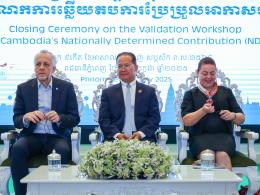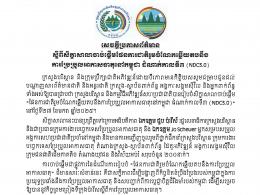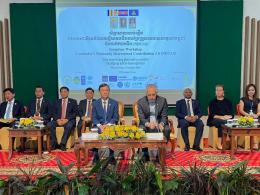Sustainable Financing for Climate Change through Community Forestry in the Prey Lang Landscape
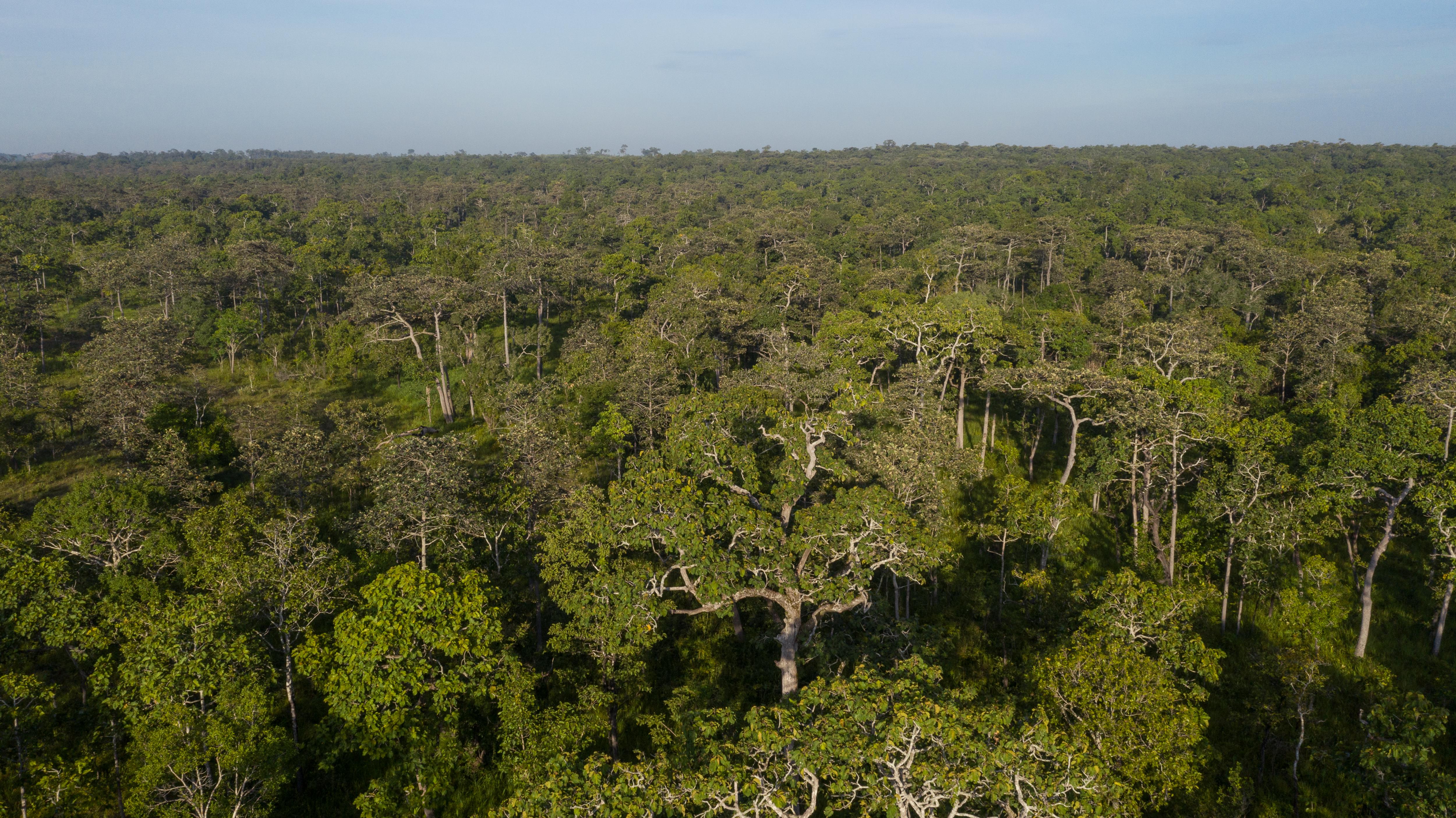
Photo: Aerial picture of O Taneung community forestry
Community forest (CF) is a legally recognized framework that aims to place local people at the center of decision-making processes and natural resource management in Cambodia. The Cambodia Climate Change Alliance - phase 3 (CCCA3) funded by the EU, Sweden, and UNDP, has been supporting the Regional Community Forestry Training Center for Asia and the Pacific (RECOFTC) to pilot an innovative approach, introducing climate change actions into a community forestry credit scheme (2020-2022). The scheme is used to generate capital for community forestry activities that contribute to climate change mitigation and adaptation, including forest restoration, patrolling, and financing sustainable livelihood activities of 10 CFs in Kampong Thom and Kratie Provinces.
The O Taneung community forest, one of the CFs supported by the RECOFTC covers 248 ha about 65 kilometers outside Kratie city in Northeast Cambodia. Local people manage the forest and harvest natural foods and medicines. The Ministry of Agriculture Forestry and Fishery (MAFF) recognized this community forest (CF) in 2012, and a 15-year agreement for a forest management plan was signed on 2015. Today, the community forest group has 245 members in Kbal Damrey Commune of the Sambo District in Kratie Province.
Since 2018, O Taneung has been running a community credit scheme that members of the community can borrow from to serve their livelihoods purpose and pay back with interest, which is used for community forest management. With CCCA support, the scheme has been extended and climate change-related activities have been introduced in the management plan.
“Tuy Sophon, chief of the credit scheme in O Taneung community forest, said the fund has already expanded from US$ 1,000 in 2018 to more than US$5,000 and now serves 58 out of 250 families from the forest community.”
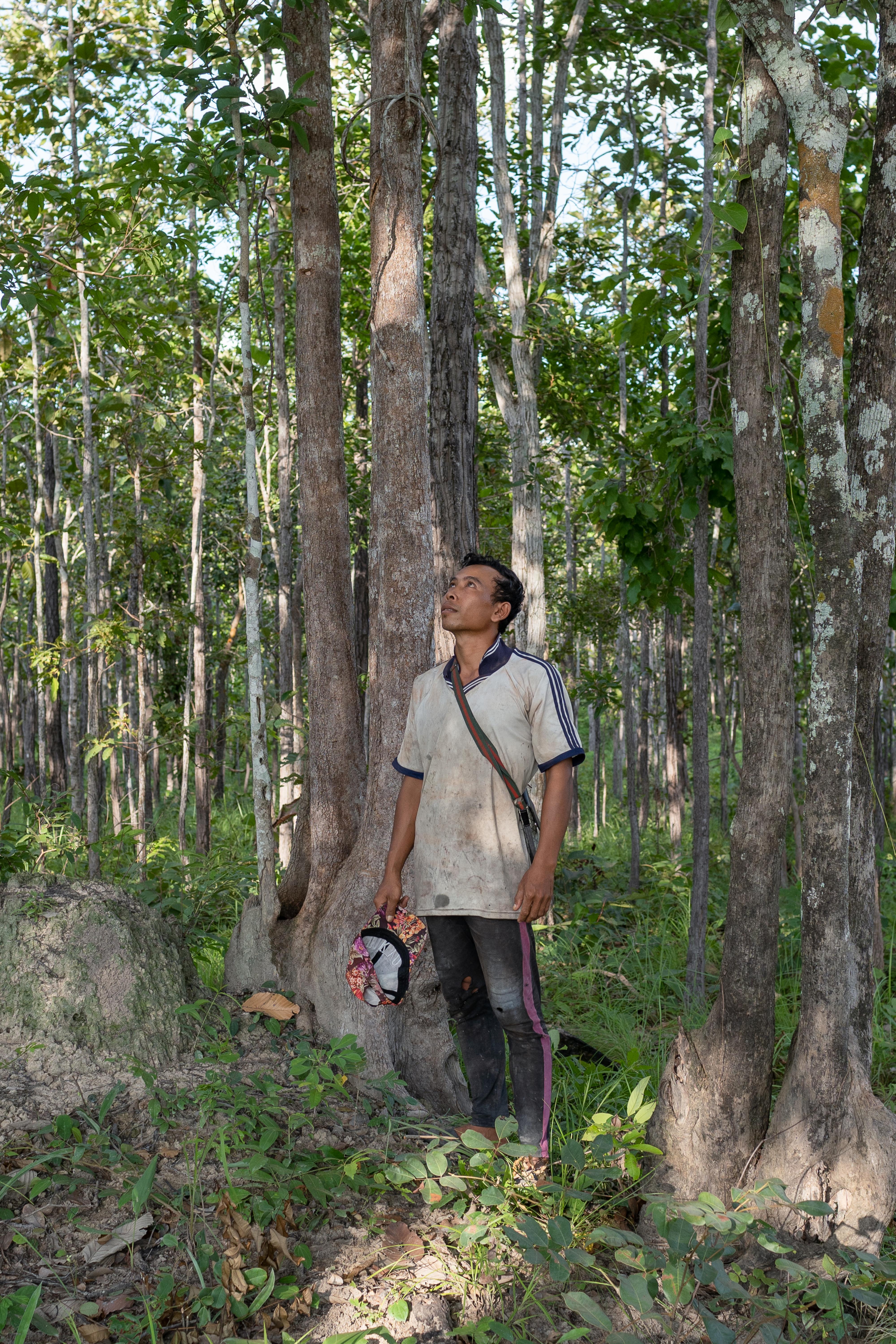 Photo: Tuy Sophon, Chief of the CF credit scheme, inspects O Taneung community forest
Photo: Tuy Sophon, Chief of the CF credit scheme, inspects O Taneung community forest
In July 2021, community generated income from interest in total amount of USD 69. Among that, USD 21 is used for implementing forest including patrolling and tree planting maintenance. As of now, he explained, the loans have mostly been to fund agricultural projects outside the forest, such as small investments of seed, fertilizer, and other materials used by the villagers.
Beyond this support to increasing CF credit capital, the project also successfully helped the O Taneung community to restore 10.8 ha of their community's degraded forest area during the Covid-19 outbreak, contributing to climate change mitigation and adaptation for the local community. In addition, this replanting activity also provided much needed cash-for-work support to reduce the impact of Covid-19 for community members who participated in the tree planting.
“We lost our job during Covid-19,” said Mok Sithon, a member of the community. "Joining with the project to plant trees has reduced the difficulty for us in some ways.”
Photo: Mok Sithon, member of the O Taneung community forestry, joins tree planting, June 2021
Ray Seakla and others hope the growing capital pool from the credit scheme, and the money made on interest, can fund more activities in the management plan, including the maintenance of the tree planting and the patrolling team monthly meetings.
“We are optimistic about the future of our community.” Ray Seakla said. “We have sustainable funding, and we can plan for more activities to manage our forest.”
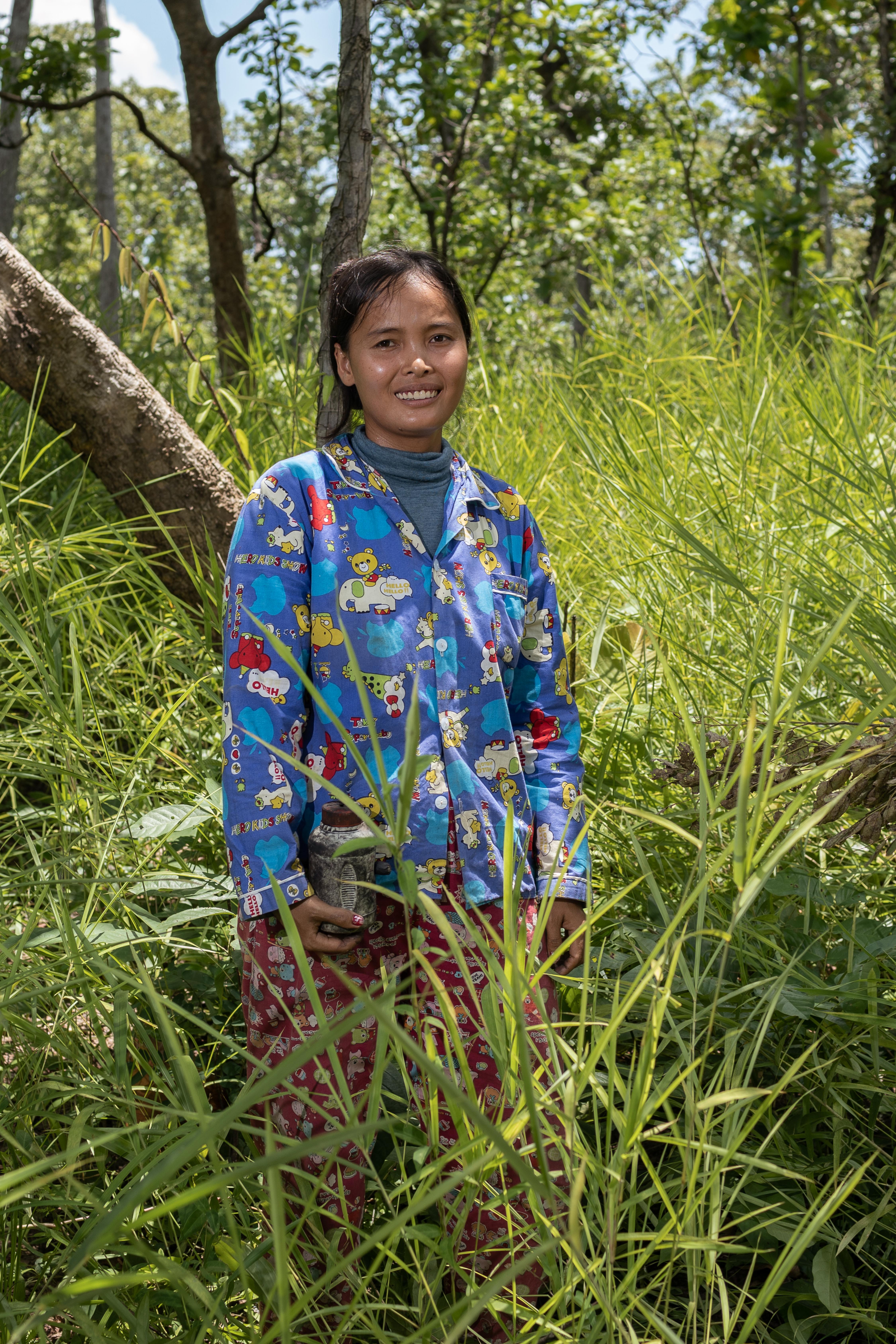
Photo: Ray Seakla, member of the O Taneung community forestry
Strengthening Climate Information and Early Warning System in Cambodia to Support Climate Change Resilient Development and Adaptation to Climate Change
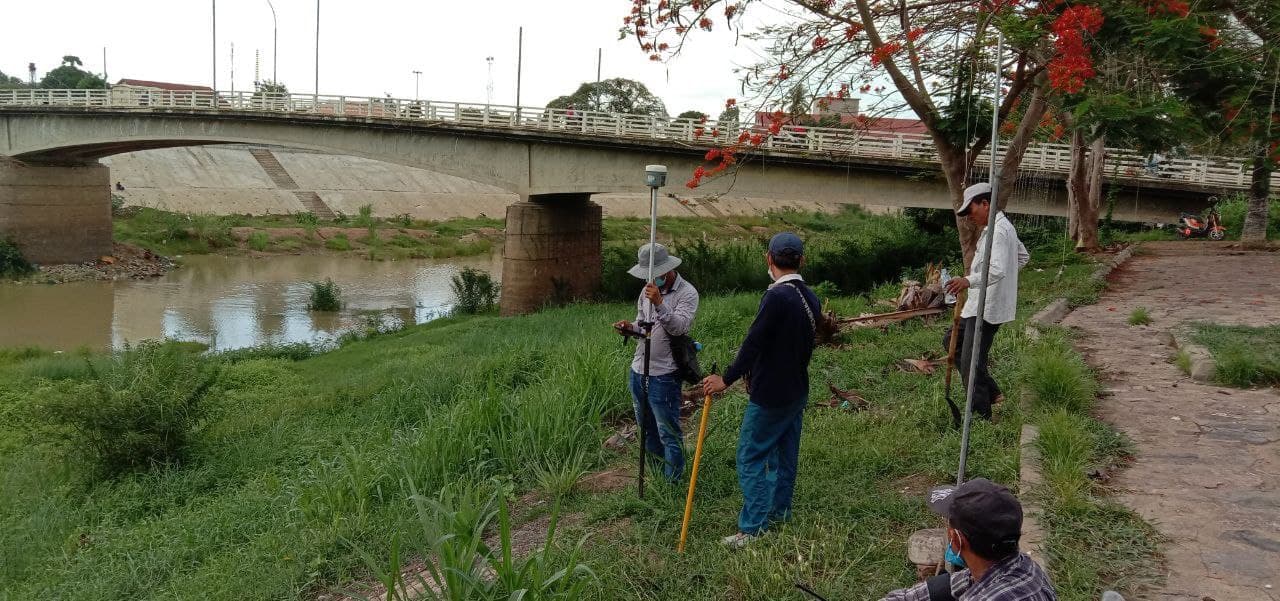
Photo: Field assessment and data collection for developing a Digital Elevation Model (DEM)
Changes to global climate conditions aggravate the effects of temperature-driven hydrometeorological hazards, increasing the frequency and intensity of extreme weather events, often resulting in a greater risk of natural disaster. Floods continue to be the most damaging natural hazard in Cambodia, causing an estimated $355 million of losses in 2013 alone. Cambodian cities are underprepared to forecast, adapt and respond to these hazards, where the effects are further exacerbated by growing urbanization, a process that perturbs the natural hydrological cycle and enhances flood peaks by additional rainfall-runoff.
People In Need Cambodia (PIN), with support from the Cambodia Climate Change Alliance - phase 3 (CCCA3) funded by the EU, Sweden, and UNDP, is implementing a project on "Strengthening Climate Information and Early Warning System in Cambodia to Support Climate Change Resilient Development and Adaptation to Climate Change". The project aims to address the flood mitigation challenge by producing evidence-based recommendations for the Royal Government of Cambodia, mainly the National Committee for Disaster Management, to reduce the vulnerability of urban populations to climate change impacts by facilitating access to an innovative and effective urban Early Warning System (EWS).
During the first year of its implementation and despite operational challenges due to COVID19 travel restrictions, a Digital Elevation Model (DEM) for flood modeling was completed through the use of real-time kinematic (RTK) positioning and global navigation satellite system (GNSS) technology, utilizing tuk-tuks as a vehicle for data collection. The EWS information dashboard was developed to be multi-channel to disseminate flood information through phone calls, speakers, and Facebook posts. In collaboration with a local technology developer, a fixed public speaker concept has been developed. Flood warning messages will be shared from the EWS1294 dissemination platform, and these will be voiced through the fixed public speakers to the community in Battambang city.
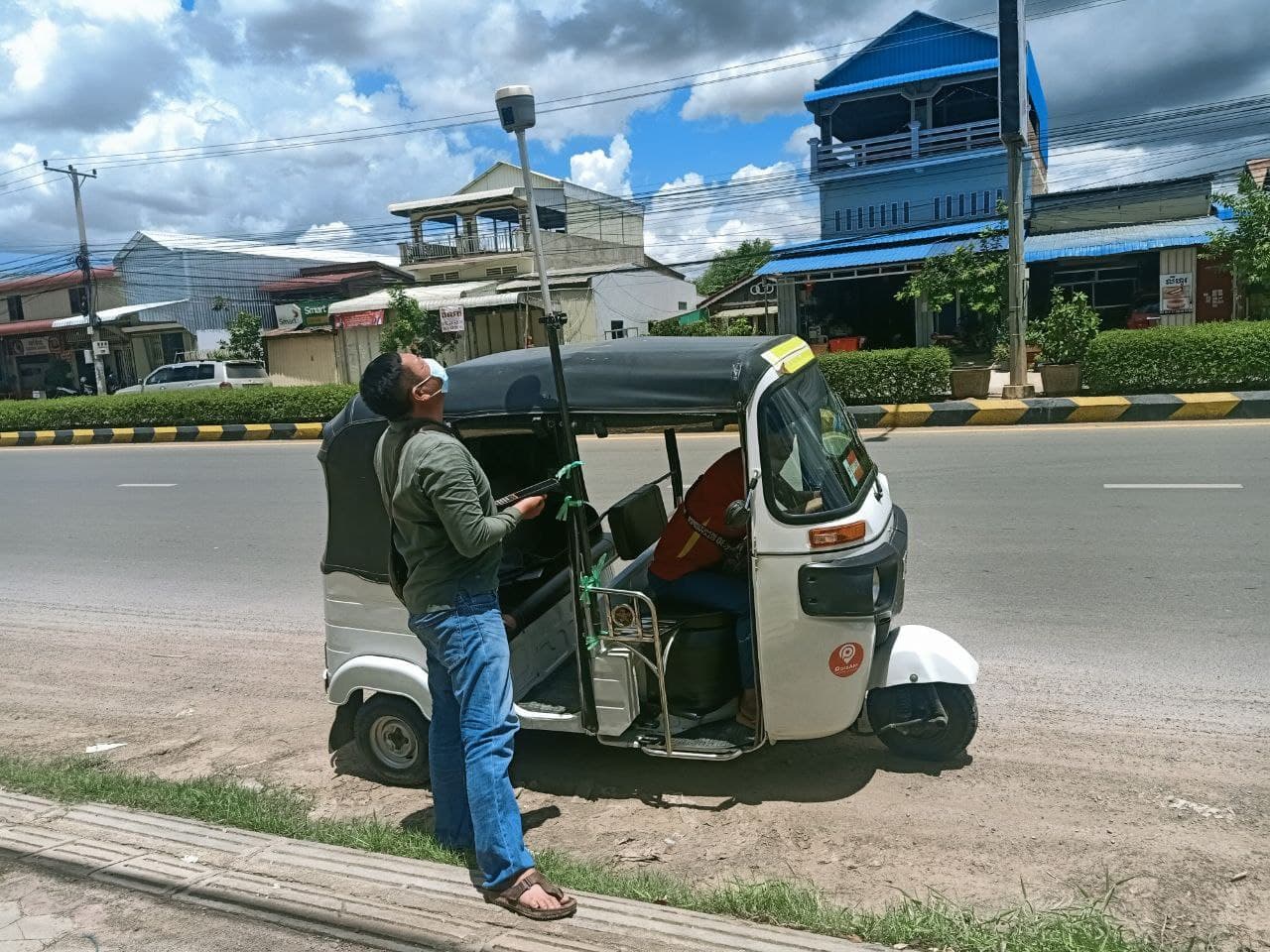 PPhoto: Data collection for developing a Digital Elevation Model (DEM) using tuk-tuks
PPhoto: Data collection for developing a Digital Elevation Model (DEM) using tuk-tuks
"I do believe that this project [PIN's CCCA project] will better inform Battambang city population about flood events and reduce people's vulnerability to flooding," said Mr. Pheng Sethy, Mayor of Battambang City
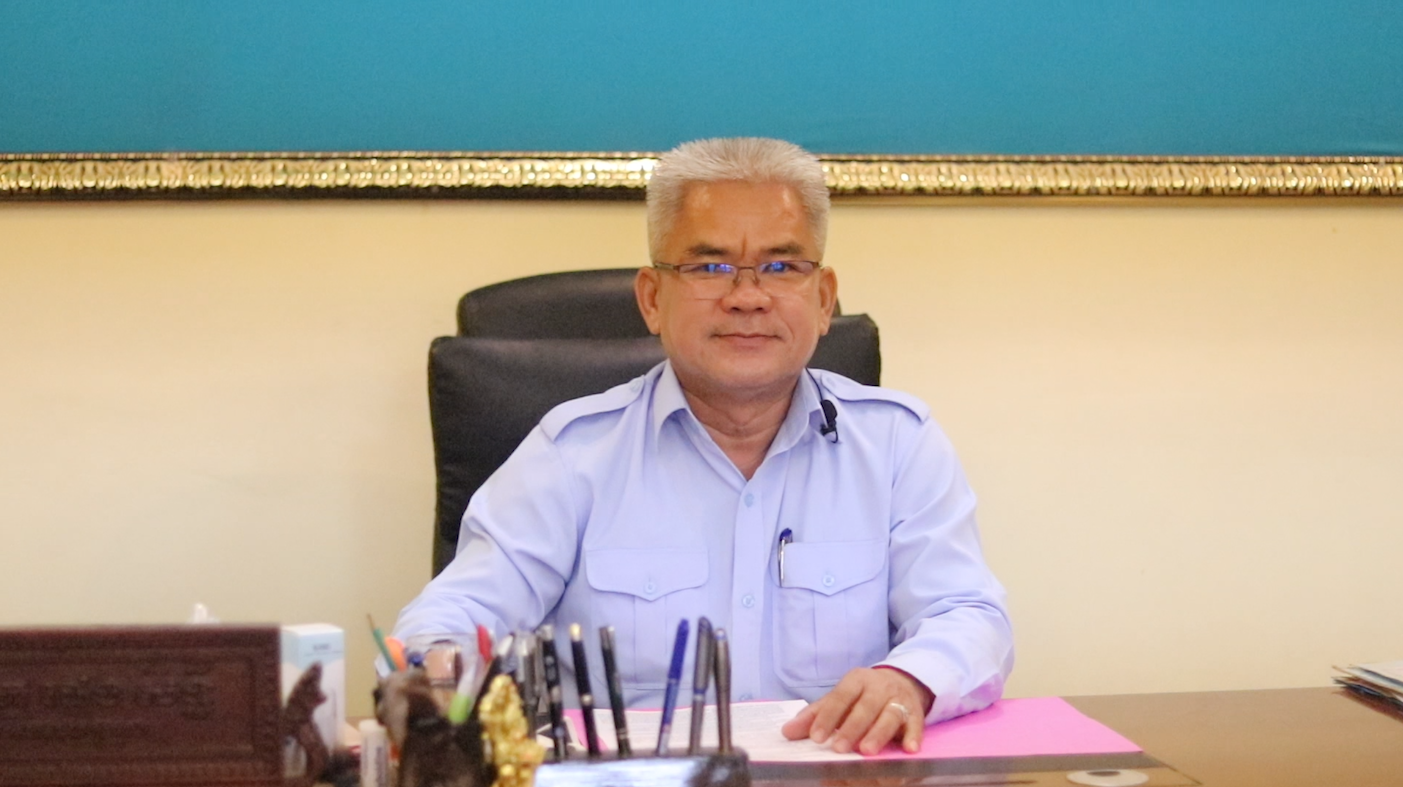 Photo: Mr. Pheng Sethy, Mayor of Battambang City
Photo: Mr. Pheng Sethy, Mayor of Battambang City
Mrs. Lounh Kimla, a deputy village chief of Somphi 1 in Battambang City, said that the system [fixed public speaker] is a timesaving method for local authorities to inform the people. “The system [fixed public speaker] is a channel that people can access to get flood warning messages free of charge,” Lounh Kimla added.
Photo: Mrs. Lounh Kimla, a Deputy village chief of Somphi 1 of Battambang City


